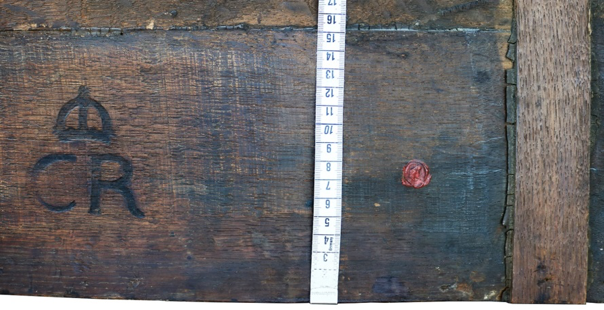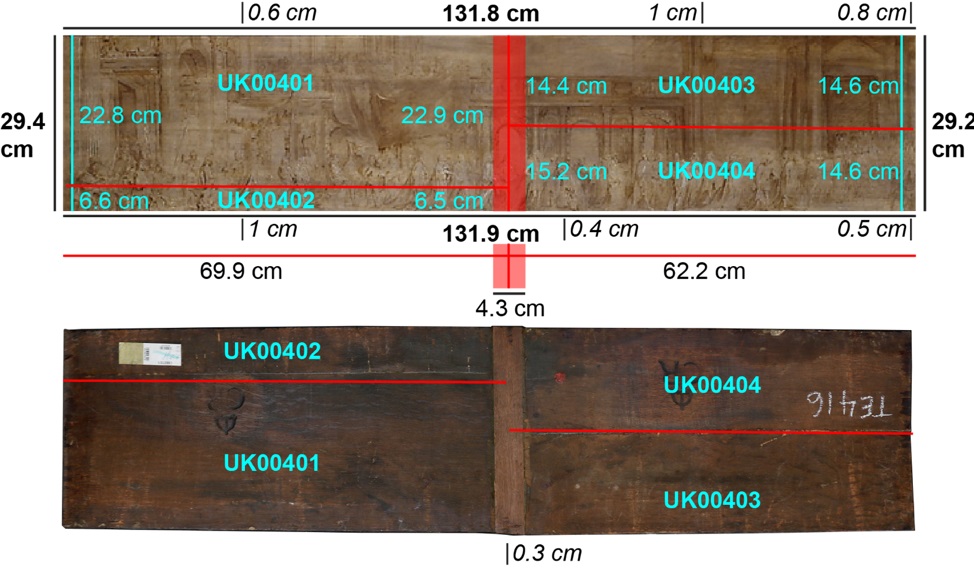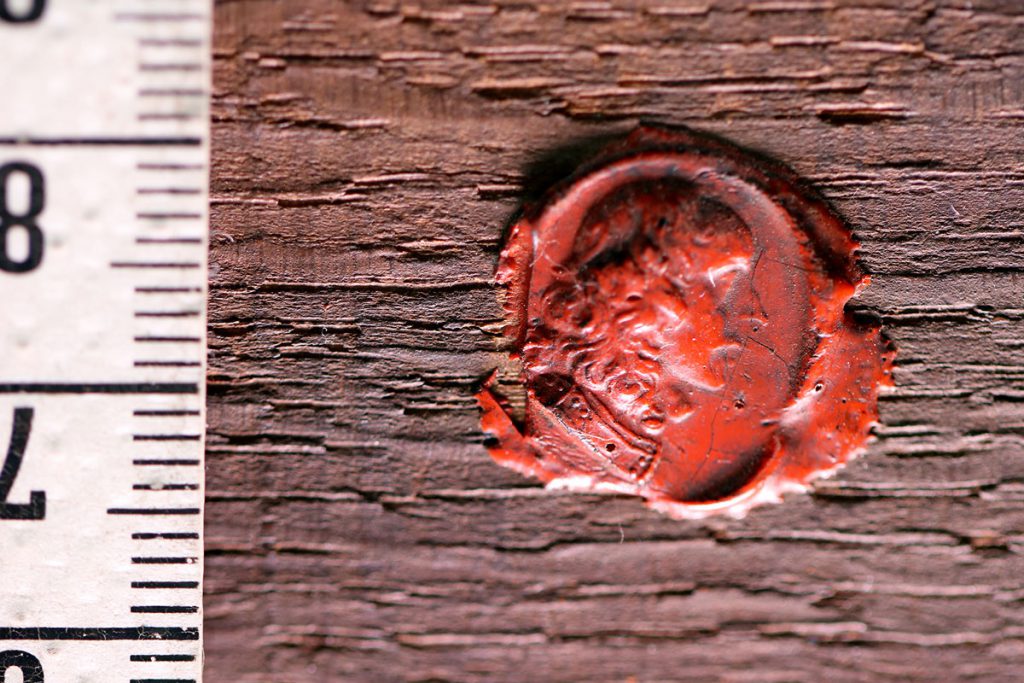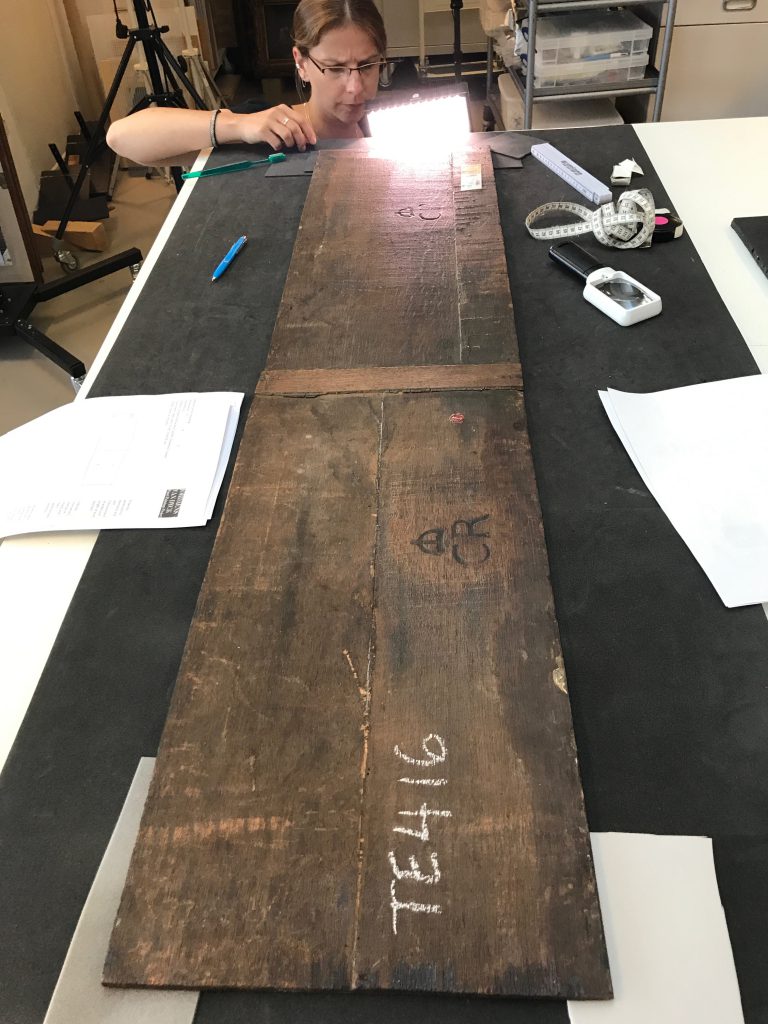15 August 2018
Unusual finds on one of Van Dyck’s largest oil sketches
In July we had the opportunity to examine Van Dyck’s glorious Charles I and the Knights of the Garter in Procession at the Ashmolean Museum in Oxford. As the late Sir Oliver Millar wrote in the 2004 Van Dyck. A Complete Catalogue of the Paintings, ‘There is no finer, or larger, example of Van Dyck’s ability as a painter of oil sketches.’ The sketch was made as a model for a projected but never executed series of tapestries to decorate the Banqueting House in Whitehall. Van Dyck included this oil sketch is his autumn 1638 ‘Memoire pour Sa Majestie’ which original can be found on our website.
The panel is constructed from four separate planks, not two as recorded in the Van Dyck literature. It’s overall size is 29.4 cm x 131.9 cm. There are two brand marks of the collection of Charles I on the reverse of the panel, the first we have encountered.

Reverse of Charles I and the Knights of the Garter showing one of the two brand marks and an unknown wax seal
There is also a red wax seal on the reverse which is probably a collector’s seal. The painting has a distinguished provenance, having been in the collections of Charles I, Sir Peter Lely, the Earl of Northington, Sir Joshua Reynolds and the Dukes of Rutland before its acquistion by the Ashmolean in 1999. If anyone has seen a seal like this before, we would be very grateful for their help in identifying it.
Andrea was able to identify and date all four planks. They were cut from four different oak trees which grew in Baltic forests. The youngest plank, which gives us a terminus post quem for the production of the panel, was made from a tree which was felled some time after 1627 AD. The wood would have been seasoned for at least one, maybe two years, before it could be painted on. Which all fits well with the archival reference of the painting’s completion by autumn 1638.
It was a sheer pleasure to examine such a masterpiece and to discover new information about it. We are very grateful to An Van Camp and Jevon Thistlewood at the Ashmolean for their enthusiastic support and kind assistance. Our travels continue!
Justin Davies
How to cite: Davies, Justin. “Unusual finds on one of Van Dyck’s largest oil sketches.” In Jordaens Van Dyck Panel Paintings Project.
jordaensvandyck.org/charles-i-and-the-knights-of-the-garter-in-procession/(accessed 1 September 2025)




